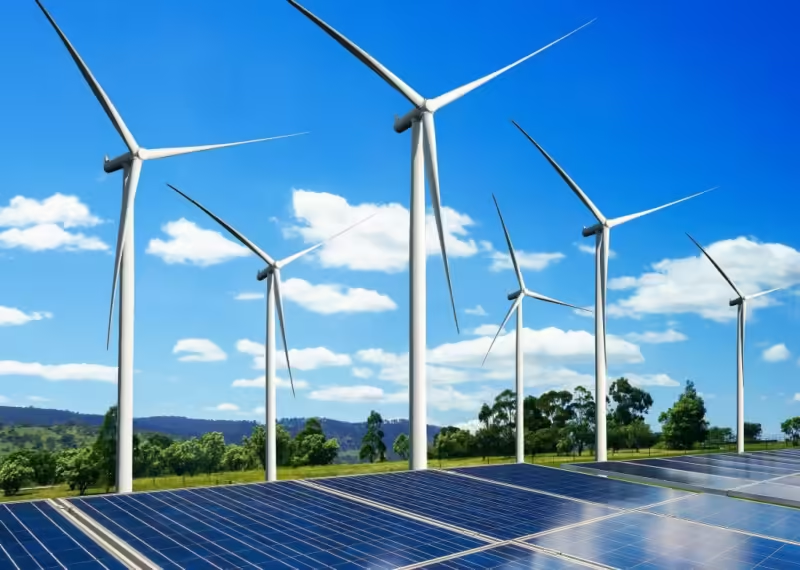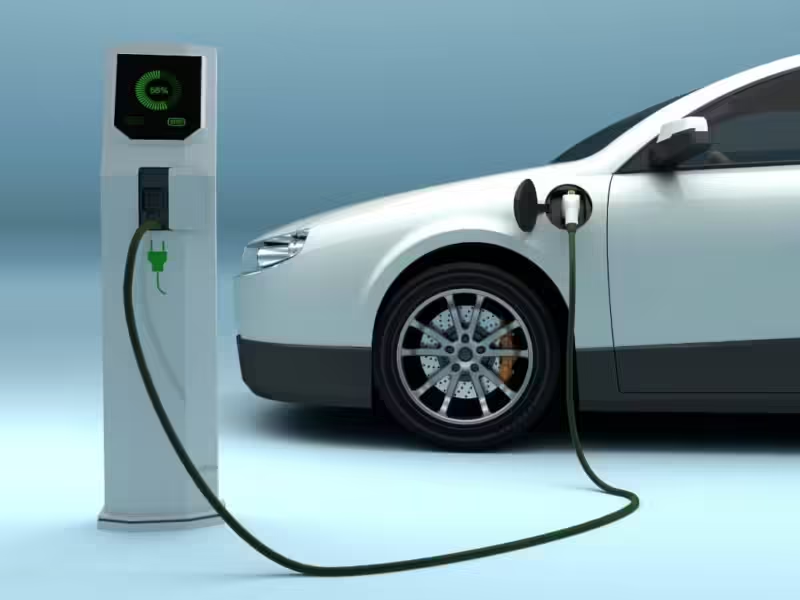The world is facing urgent environmental challenges, from climate change to resource depletion, pollution, and loss of biodiversity. As the effects of these issues become more apparent, the need for sustainable solutions has never been greater. Thankfully, technology is playing a pivotal role in addressing these challenges, providing innovative tools and strategies to reduce our environmental footprint and promote sustainability.
In this blog, we’ll explore the ways in which technology is helping to save the planet, with a focus on cutting-edge innovations that are shaping the future of sustainability.

Table of Contents
1. Renewable Energy Technologies: Powering a Greener Future
One of the most significant technological advancements in sustainability has been the growth of renewable energy. Solar, wind, and hydroelectric power are now becoming mainstream alternatives to fossil fuels, and innovation in this space continues to accelerate.
Real-World Example: Solar energy has seen dramatic improvements in efficiency and affordability over the past decade. For instance, perovskite solar cells—a new class of photovoltaic materials—are making solar panels cheaper and more efficient, potentially revolutionizing the solar energy market. In 2023, scientists at Oxford University demonstrated a breakthrough in perovskite-based solar cells, achieving higher energy conversion rates at a fraction of the cost of traditional silicon panels.
Wind energy has also seen significant advancements, with the development of offshore wind farms that can generate massive amounts of clean energy. Companies like Ørsted are leading the way in developing floating wind turbines, which can be placed in deeper waters, unlocking new regions for wind energy generation.
Impact: These renewable energy innovations reduce our reliance on fossil fuels, decrease greenhouse gas emissions, and help to mitigate climate change.
2. Electric Vehicles (EVs): Reducing Carbon Emissions in Transportation
Transportation is one of the largest contributors to global carbon emissions, but electric vehicles (EVs) are quickly emerging as a cleaner alternative to traditional gasoline-powered cars. The rise of EVs, paired with advancements in battery technology, has the potential to significantly reduce the transportation sector’s environmental impact.
Real-World Example: Companies like Tesla have revolutionized the EV market, pushing other automakers to follow suit. Tesla’s Model S, Model 3, and upcoming Cybertruck have demonstrated that electric cars can be high-performance, stylish, and, most importantly, zero-emission.
Moreover, advancements in solid-state batteries—which are lighter, longer-lasting, and faster-charging than current lithium-ion batteries—promise to make EVs even more efficient. Companies like Toyota and QuantumScape are working on perfecting solid-state battery technology, which could dramatically reduce the cost of electric vehicles while improving their range and performance.
Impact: EVs, combined with renewable energy sources, can greatly reduce the carbon footprint of the transportation sector, helping cities and countries achieve their climate goals.

3. Circular Economy: Redesigning the Life Cycle of Products
One of the key tenets of sustainability is minimizing waste and making the most of resources. The circular economy model focuses on designing products and systems that keep resources in use for as long as possible, reduce waste, and regenerate natural systems. Technology plays a critical role in facilitating this shift by enabling better product design, recycling processes, and waste management systems.
Real-World Example: Smart recycling technologies are a game-changer in creating a circular economy. Companies like Tomra are developing advanced sorting systems that use artificial intelligence (AI) and machine learning to identify and separate different types of materials for recycling. These systems make recycling more efficient, helping to reduce contamination and improve the quality of recycled materials.
Additionally, the rise of digital product passports—unique identifiers for products that track their components and materials—can help consumers and businesses understand how to repair, reuse, or recycle items, promoting a more sustainable lifecycle.
Impact: A circular economy powered by technology can dramatically reduce waste, conserve resources, and minimize environmental harm by extending the life cycle of products.
4. Precision Agriculture: Feeding the World Sustainably
Agriculture is another industry that has significant environmental impacts, from water usage to land degradation and pesticide use. However, precision agriculture is changing the way we grow food, allowing farmers to use technology to increase crop yields while minimizing the use of water, fertilizer, and pesticides.
Real-World Example: Drones, sensors, and IoT devices are helping farmers monitor crop health, soil quality, and irrigation needs in real-time. John Deere, a leader in agricultural technology, offers autonomous tractors equipped with GPS and AI that can plant, fertilize, and harvest crops with precision, reducing waste and environmental impact.
Additionally, vertical farming is gaining momentum in urban areas. This farming method uses vertical space to grow crops in controlled, indoor environments with minimal water usage and no need for pesticides. Companies like AeroFarms are using aeroponic and hydroponic technologies to grow food in cities, reducing transportation emissions and improving local food security.
Impact: Precision agriculture can help feed the world while reducing the ecological footprint of farming, conserving water, and promoting healthier ecosystems.
5. Carbon Capture and Storage: Removing CO2 from the Atmosphere
As part of the fight against climate change, carbon capture and storage (CCS) technologies aim to remove excess carbon dioxide (CO2) from the atmosphere and store it safely underground. While the technology is still in its early stages, advancements in CCS could be crucial in helping us meet global emissions reduction targets.
Real-World Example: Climeworks, a Swiss startup, has developed a direct air capture (DAC) technology that filters CO2 directly from the air and stores it underground. Their plants are already operating in Iceland, and their technology has the potential to remove millions of tons of CO2 annually, helping to offset emissions from hard-to-decarbonize industries like cement production and aviation.
Another promising development comes from carbon mineralization, where CO2 is converted into solid minerals and safely stored underground. Companies like Carbon Clean Solutions are working on scaling this process, which could provide a permanent solution for carbon sequestration.
Impact: Carbon capture technologies could play a vital role in mitigating climate change by reducing the concentration of greenhouse gases in the atmosphere.
6. Green Building Technologies: Creating Sustainable Cities
The construction industry is a major contributor to carbon emissions, primarily due to the energy used in building materials and the operation of buildings themselves. However, green building technologies are helping to create more energy-efficient, sustainable buildings that minimize environmental impact.
Real-World Example: LEED-certified buildings—those that meet specific environmental standards—are on the rise. Innovations like smart windows, which adjust to changing light conditions, and geothermal heating and cooling systems, which use the earth’s natural temperature to regulate indoor climates, are making buildings more energy-efficient.
In addition, 3D printing is being used in construction to create energy-efficient, low-waste homes. For example, the company ICON has built homes using 3D printing technology in Austin, Texas, reducing construction waste and cutting down on the amount of time and materials required to build affordable, sustainable homes.
Impact: Green building technologies not only reduce the carbon footprint of construction but also contribute to energy-efficient urban infrastructure, which is crucial for creating sustainable cities.
Conclusion: The Tech-Savvy Path to a Sustainable Future
As technology continues to advance, it is becoming clear that innovation is key to solving some of the world’s most pressing environmental challenges. From renewable energy to precision agriculture, carbon capture, and green building, technology is playing a vital role in creating a more sustainable and environmentally-friendly future.
While challenges remain, the rapid progress we are seeing in sustainable technology is a hopeful sign. By leveraging these innovations and continuing to push the boundaries of what’s possible, we can create a planet that’s not only livable but thriving for generations to come.
The future is green, and technology is leading the way.
Also read -> https://theautoengineer.com/3d-printing-is-transforming-healthcare/
External Resources
https://www.weforum.org/stories/2018/08/here-s-how-technology-can-help-us-save-the-planet
